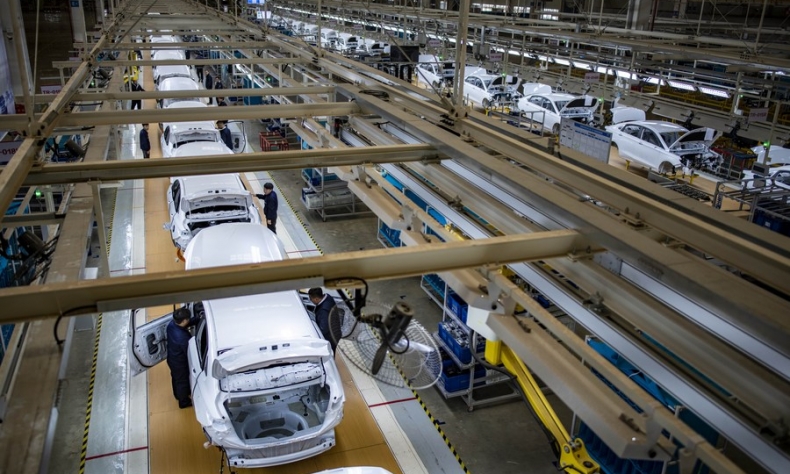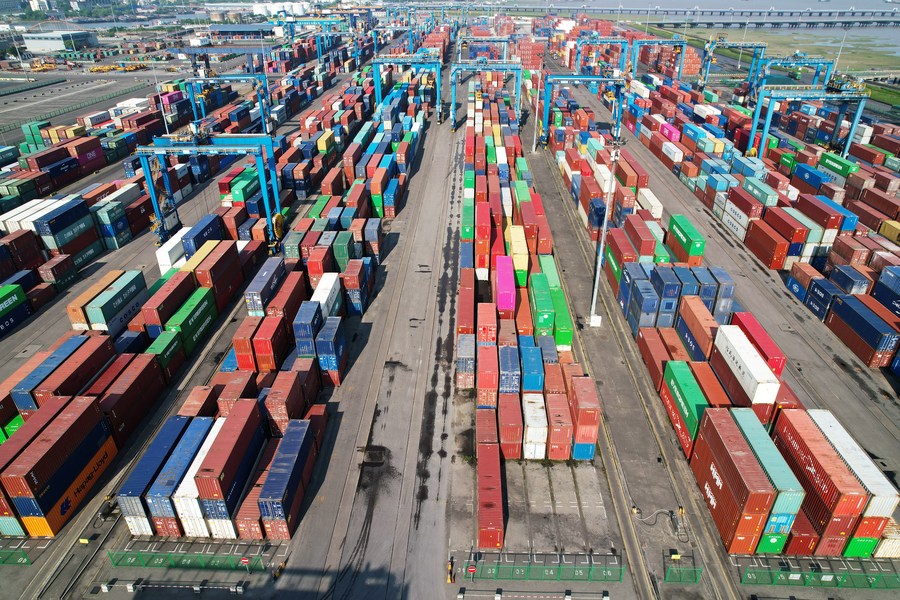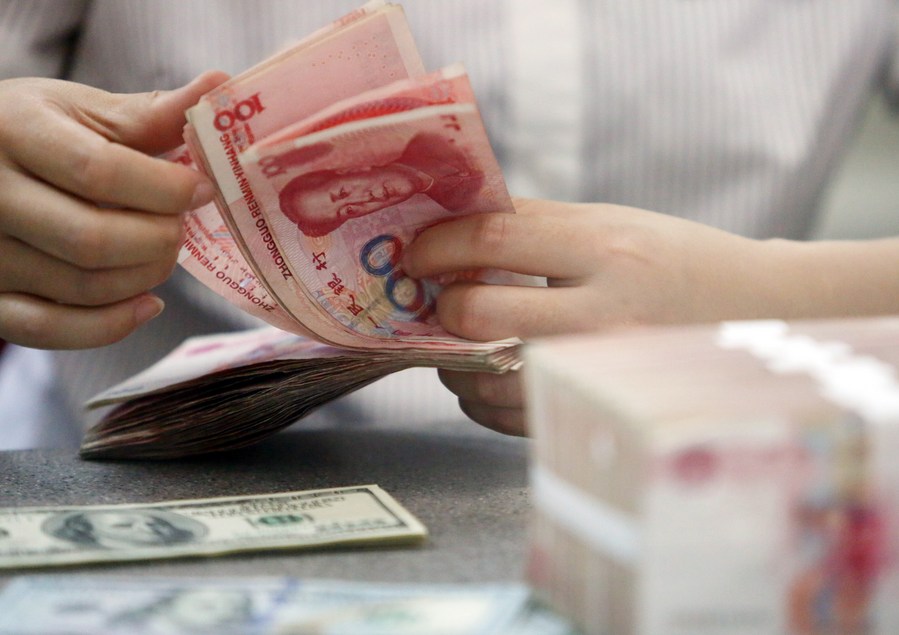China’s Contribution to Globalization: Past and Future

Asia, with China in a preeminent position, has become the geo-economic meridian of the globe and this decade confirms that reality.
When I came to live in China in 1986, the country was seen in the West as representing both the past and future. Much importance was attached to its integration into the international system and Western intellectuals were convinced of the importance of understanding a quarter of the world’s population as well as speaking and reading Chinese.
Four decades of growth has created a great increase in the wellbeing of Chinese citizens, and China has become one of the pillars of globalization. “China will stand for 30 percent of global growth in GDP during the next 10 years,” said Joerg Wuttke, president of the European Union Chamber of Commerce in China, in an interview with Xinhua. He indicated that global companies need to have a presence in the Chinese market, which cannot be replaced.
If we look into the future from our present, some recent developments in key sectors should be appraised and read in the historical perspective. Particularly now, when the global indicators for the climate, global health and food security are challenges for all.
Trade, growth, and the yuan
China’s rise has been quick and remarkable, from the periphery of global trade to the trade powerhouse of the world. Regarding the evolution of the world’s 25 top trading nations since 1978, the United Nations Trade Conference on Trade and Development (UNCTAD)’s April 2021 report presented a clear picture.

China’s share of global exports of goods between 1978 and 2020 shows an unparalleled trajectory. In 1978 it was 0.8 percent, occupying the 20th place in the table. In 1986, it reached 1.5 percent. In 2004, the country’s share of global exports grew to 6.5 percent, becoming the third in the ranking, and four years later, coinciding with the 2008 Olympic Games in Beijing, reaching 9.1 percent. In 2020, the figure was 14.7 percent. In other words, China has projected an unrivalled and fascinating trajectory to number one, leaving behind the United States and Germany, with 8.1 percent and 7.9 percent, respectively.
This spectacular change reminds me of Bill Gates’ remark about China in 1995 following a visit to the country. He said the issues that would have the most impact on the country in the short term were those concerning rural areas, and not those related to computing. Facts have contradicted his assessment.
Yes, it is true that back then China had just a few million computers and was focusing on eliminating poverty, which was concentrated in rural areas. There was a lot to do, particularly in food security and healthcare. That continued effort made China lift the last pocket of its population out of absolute poverty in 2020. But computers and the boost in Internet use also contributed to the goal.
Though the American dollar still hegemonizes the world economic order, changes are also visible. The dollar’s share in global currency reserves fell from 71 percent in 1999 to 59 percent in 2021, the lowest point in over two decades, according to the International Monetary Fund Currency Composition of Official Foreign Exchange Reserves survey. Some expect the dollar’s share will continue to fall as the central banks of emerging markets and developing economies seek further diversification of their reserve currencies. A recent case is Israel’s measure to add the Chinese yuan while slashing its dollar and euro holdings, in a bid to diversify its reserve allocations.
While it is true that the dollar is still the main reserve currency, despite important structural shifts in the international monetary system in the post-World War II world, changes impacting Washington’s dollar standing are likely to emerge in the long run. Do not forget that in 1986 China’s trade with the outside world was insignificant; in 2022, nearly two-thirds of countries trade more with China than with any other country.

Rise of hi-tech applications
A new boom in infrastructure development is taking place in most parts of China bolstered by government support. As of now, China has built 1.559 million 5G base stations. Reportedly 600,000 new 5G base stations will be added this year. According to the 14th Five-Year Plan (2021-2025), China will increase the penetration rate of 5G networks to 56 percent in five years.
According to data available in April, during the first quarter of 2022, the hi-tech manufacturing sector grew by 14.2 percent year on year, significantly higher than other industrial sectors. Aerospace and equipment manufacturing increased by 22.4 percent; information and telecommunication equipment was up 15.7 percent. Perhaps the most extraordinary increase was seen in investment in hi-tech manufacturing and services, which grew by 32.7 percent.
The Chinese FDI in Europe: 2021 Update by the Rhodium Group in New York and the Mercator Institute for China Studies in Berlin summarizes China’s investment footprint in the EU and the UK. It shows that Chinese venture capital investment is pouring into European tech start-ups at a record level, reaching €1.2 billion (US $1.24 billion), more than doubling in 2021. It is concentrated on fintech, e-commerce, artificial intelligence (AI), and robotics.
AI has unlimited potential. The AI-empowered management systems can be found in almost every sector, from traffic management in megacities to ships capable of traveling hundreds of kilometers pilotless. Many predict that before 2030, China will become the world’s main AI reference.

The new geoeconomic meridian
Wang Huiyao, president of the Center for China and Globalization, a think tank based in Beijing, says China is attaching utmost importance to international economic and commercial cooperation that eventually contribute to win-win results highlighting the concept of common prosperity.
A case in point, aimed at win-win results, is the Regional Comprehensive Economic Partnership, which entered into force on January 1. It harmonizes the interests of the 15 signatory countries that account for roughly a third of the world’s population, GDP and trade.
In ancient times, China and India were once the two persistently largest economies. Then thanks to the industrial revolution, Europe and the United States emerged as the dominant economies. Now there is emerging consensus among global scholars that historical Western dominance may one day be seen as a deviation from the macrohistorical natural order of things. Singaporean diplomat and scholar Kishore Mahbubani echoes this in his book Has the West Lost It?, “Viewed against the backdrop of the past 1,800 years, the recent period of Western relative over-performance against other civilizations is a major historical aberration.”
Short-term, mid-term, and long-term cycles matter. Asia, with China in a preeminent position, has become the geo-economic meridian of the globe and this decade confirms that reality.
Augusto Soto is director of the Dialogue with China Project, an independent electronic platform.
 Facebook
Facebook
 Twitter
Twitter
 Linkedin
Linkedin
 Google +
Google +










